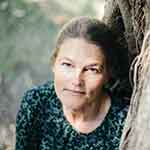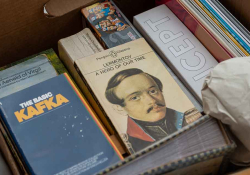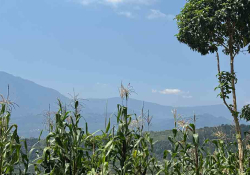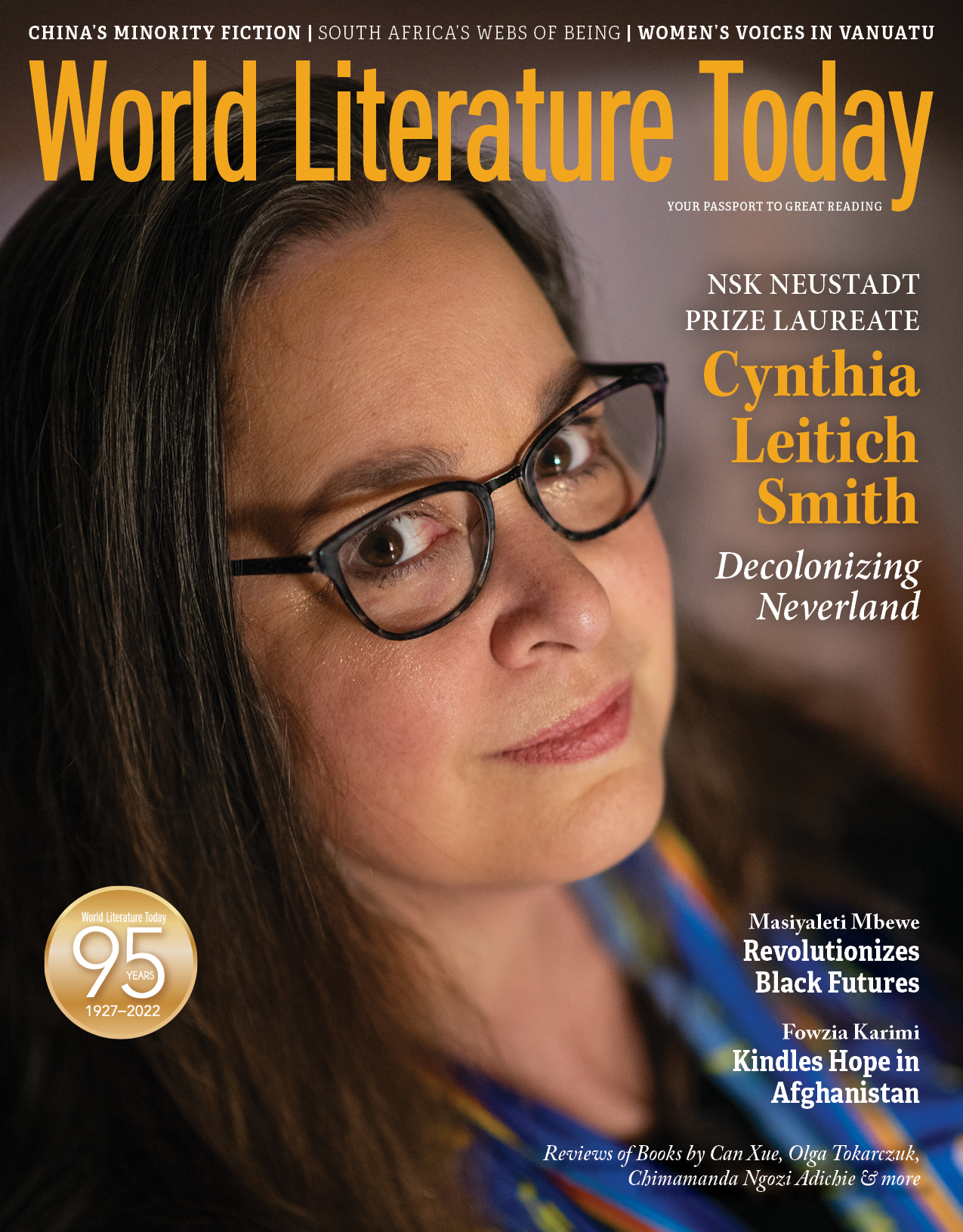Vanuatu’s Growing Body of Literature: Why Women’s Voices Matter
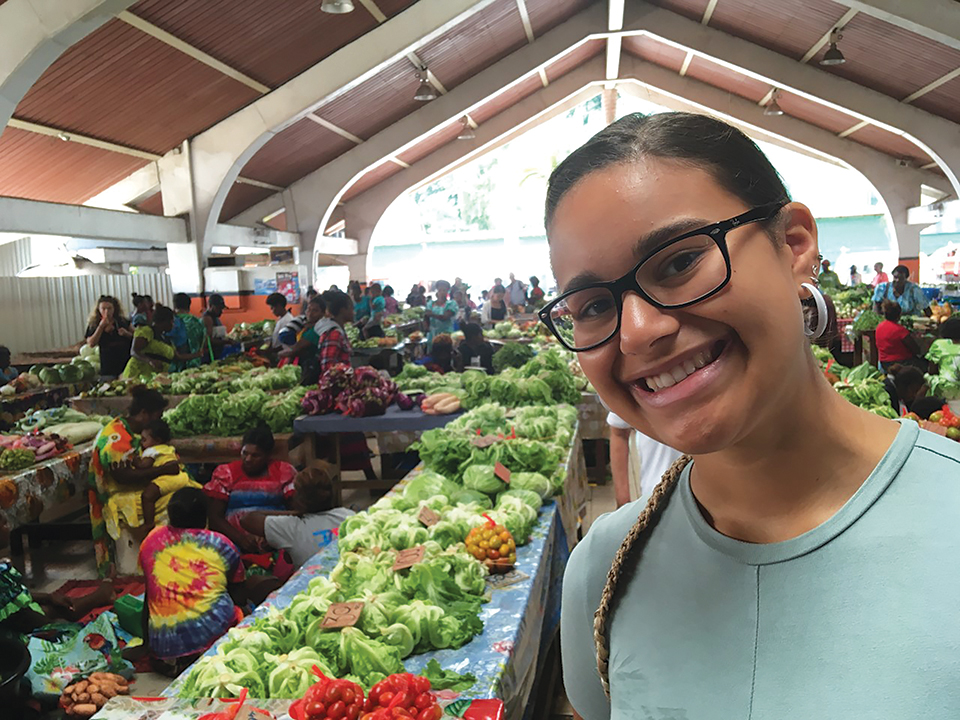
Vanuatu’s fortieth independence anniversary in 2020 sparked an unprecedented literary wave of new writing. Harnessing the colonizers’ languages, as well as elevating the national lingua franca Bislama, writers are tackling the complex issue of ensuring contemporary fiction, poetry, and historical narratives of Vanuatu contain women’s perspectives too.
“Where is the Ni-Vanuatu Girl?” asks Carol Aru’s 2004 poem that, by chance, reached an international audience courtesy of BBC Scotland. With its Poetry Postcards series, the BBC wished to showcase the Commonwealth’s cultural diversity ahead of the 2014 Commonwealth Games. Aru was the only living ni-Vanuatu poet whose work BBC Scotland could find online, on the New Zealand Electronic Poetry Centre. In the BBC recording, Aru talks about the loss of tradition, customary stories, and language in Ambae in Vanuatu. Her poem blends English with words and song in Duidui, one of Vanuatu’s more than one hundred indigenous languages, in an act of documenting cultural expressions and remembrance. Many of Vanuatu’s vernacular languages are threatened by extinction simply because there are so few indigenous speakers, compounded by the fact that not all languages exist in written form.
In his introduction to Some Modern Poetry from Vanuatu (1983)—originally published as Some Modern Poetry from the New Hebrides (1975)—Albert Wendt noted: “Most of the literature written by Pacific writers was barely three years old when this collection was written in 1974. It then contained nearly all the poetry which had been written by young Vanuatu poets.”
Of the twelve poets, three were women and one of them was Mildred Sope, who, when I interviewed her in 2018, recalled writing her widely anthologized poem “Chusum/Choice” in Wendt’s class at the University of the South Pacific in Fiji. At the time she was pursuing a teaching degree. In 1975 Sope became the first ni-Vanuatu teacher at the British Secondary School in Port Vila, renamed Malapoa College after independence in 1980. Wendt included lines from Sope’s poem “Motherland” in his groundbreaking 1976 essay, “Towards a New Oceania.” Wendt’s essay has become a foundational text for Pacific studies, as Graeme Whimp notes, above all “for its insistence that, while we draw deeply on memory and rememberings, we are not in the business of presentation or sterile revival, least of all the recreation of some ideal traditional identity. Our task, that essay reminds us, is to live as creatively as possible in the present” (“A Search for the New Oceania,” in The Contemporary Pacific).
So how can writers and their allies not only live creatively in the present but also ensure Indigenous writing is distributed more widely? Anthologies may hold the answer.
Distinguished Pacific scholar writer Albert Wendt and Māori scholar writer Alice Te Punga Somerville (Te Ātiawa) have both highlighted the importance of anthologies for Pacific Island nations. Not only as a means for writers to be published but as a repository of texts that become sites of contestation and articulations of a region—writing that would otherwise have gone unpublished—thereby turning ad hoc writing, over time, into a body of national literature and Pacific literature. A significant number of Oceania’s writers have only ever been published in anthologies, which does not make their contributions any less than those published in single-author publications. Anthologies and their editors likewise nurture connections between writers, making writers visible to one another, and in doing so they support a fledgling writing community.
***
Sope’s contemporary Grace Mera Molisa (1946–2002) is without doubt Vanuatu’s most renowned poet. Molisa was a prolific writer and outspoken advocate for women in her poetry and as a politician. Selina Tusitala Marsh of Sāmoan, Tuvaluan, English, and French descent—New Zealand’s Poet Laureate, 2017–2019, and the Commonwealth Poet Laureate 2016—is one of the foremost scholars on Molisa’s poetry, which often deploys black stone as a key metaphor, anchoring it firmly in Vanuatu.
There is a growing critical mass of emerging ni-Vanuatu writers, many of them women, who wish to communicate with local and regional audiences.
Very little literary writing from Vanuatu has been published since Molisa passed away. The dearth of published literature does not, however, reflect the number of individuals who write or harbor literary ambitions. Gendered norms, certain policies, and customary traditions that use the male position as the default have contributed to limiting the public space for ni-Vanuatu women’s voices to be heard and given due recognition. Colonial language policies, particularly in education, have contributed to a reluctance to consider Bislama—one of Vanuatu’s three official languages—an appropriate literary vehicle. Literary efforts have been hampered by the absence of supportive institutions, publishing outlets, editorial support, and, until recently, a nonexistent writing community.
Molisa self-published most of her books under her imprint Blackstone Publications (later Blackstone Publishing). In the Pacific, self-published poetry pamphlets tend to fall victim to shoestring budgets, printed on low-quality paper that doesn’t do the work full justice and eventually succumbs to tropical conditions. Self-published collections are seldom discoverable outside of Vanuatu, unless a curious reader knows what they are looking for. Reading, writing, and self-publishing likewise require disposable income and time.
Despite these obstacles there is a growing critical mass of emerging ni-Vanuatu writers, many of them women, who wish to communicate with local and regional audiences.
***
It takes courage to pen one’s innermost thoughts and share them with the world—especially when the writer has never had the opportunity to do so, when they are not aware of any other local writers, or when society doesn’t encourage women to speak up in public. There is no underestimating the tenacity it takes to polish a messy first draft into a poem or a short story, not knowing whether it will ever meet a reader.
Sista, Stanap Strong! is the first Vanuatu women’s anthology of new writing in English by three generations of women. Published in 2021 by Victoria University Press in New Zealand, it is the result of collaboration across geographical, linguistic, and ethnic borders—an effort to complement literature and historical narratives with contemporary poetry, fiction, essay, memoir, and song covering a wide range of women’s perspectives. Its narrative arc stretches from the days of blackbirding (the practice of kidnapping Indigenous Pacific islanders to be used as slave labor on plantations overseas), to Independence in 1980, to Vanuatu’s coming of age in 2020. The majority of the writers are ni-Vanuatu living in Vanuatu. A few have roots in New Zealand, Fiji, the Solomon Islands, and Canada; others were born overseas and have made Vanuatu their home. At the time of writing, the youngest writer, Kali Regenvanu, was nineteen and the oldest, Caroline Nalo, an octogenarian.
Sadly, Caroline never got to see her autobiography in print. A trained archaeologist and anthropologist, a keeper of meticulous diaries, Caroline wanted to share her life story. A herstory intimately intertwined with Vanuatu’s colonial and postcolonial history. Her family is fundraising for it to be published posthumously.
The word posthumously reverberates with frustration. Caroline tried to find a publisher overseas. Would it not have been worthwhile considering her meticulously researched historical and personal account while she was still alive? Historical accounts are often written by men, and too often by representatives of former colonial powers. Rarely are we presented with alternative women’s perspectives.
Rarely are we presented with alternative women’s perspectives.
In our conversations, Sope repeatedly said, “Usually good things about a person are told after they’re dead”—the very thought of people “talking over one’s body” causing her considerable distress as she struggles to carve out time to write her memoir. Although widely anthologized, her only poetry collection, The Questioning Mind, was published in 1987.
In Sista, Stanap Strong! more than thirty contributors have chosen to harness the colonizer’s language, English, for their own purposes, writing against racism, colonialism, misogyny, and sexism. Writing across bloodlines and linguistic boundaries. Writing to unearth ancestral connections broken by blackbirding. Professing their love for ancestors, offspring, and language—Bislama, vernacular, and English. What these writers have in common is a sharp eye for detail, a love of words, a deep connection to Vanuatu, and a willingness to share a glimpse of their world, viewing it through a gendered lens given limited space in literature to date.
Poetry, theater, and fiction mirror our culture back to us in powerful and recognizable ways, employing words and images that land in our bodies.
Reflecting on her own literary role models growing up, Anna Naupa poses the question: “How do we get more writers to tell the stories of contemporary Vanuatu, and not just around the fire or in the theatre, but in published stories that are read?” Her conundrum is familiar to many colonized people. It goes to the heart of why oral storytelling and literature—regardless of where in the world we come from—are so important. Poetry, theater, and fiction mirror our culture back to us in powerful and recognizable ways, employing words and images that land in our bodies. Women often have to assert their right to their own bodies, however, as Elsie Nalyal Molou reminds us in her poem “This body is mine”:
This body is mine!
Do not tell me that my jeans are too tight
for you to bear.
Do not underestimate the strength and
resilience that radiates from
a woman in despair.
Several literary projects saw the light of day in the lead-up to Vanuatu’s fortieth independence anniversary in July 2020. A Tovotovo lo Leo Ndui Ndui (2020), a book of nonfiction co-authored by Carol Aru and Roselyn Qwenako Tor in the Duidui language, traverses marriage, traditional cooking and dances, children’s games and stories from West Ambae. The Alliance Française published Voes (“Voice”), poems in Bislama, French, English, and Ambrym.
Anna Naupa, meanwhile, set forth to produce the first illustrated children’s book of nonfiction. The idea for Taf tumas! Different Journeys, One People was sparked when reading her daughter inspirational stories about individuals from around the globe. “Where are the stories about Vanuatu people who have done amazing things?” her daughter asked. With no existing children’s books to celebrate people like herself, Naupa decided to create one. In less than nine months, Naupa’s army of volunteers grew to seventy-five, including local writers, artists, and children. They read stories on national radio and shared them online to ensure they reached far and wide.
Vanuatu is fortunate in that it is the home of Wan Smolbag Theatre, a local nongovernmental organization. Through drama, song, and the TV series Love Patrol, Wan Smolbag raises difficult social justice issues, such as violence against women, corruption, poverty, and environmental degradation. Love Patrol has screened in Australia, New Zealand, and several Pacific Island countries. Wan Smolbag is the brainchild of scriptwriter Jo Dorras and director Peter Walker, who have made Vanuatu their home. For over three decades they have worked with hundreds of volunteers and talented local performers to entertain and inspire thousands of children, teenagers, and adults across the Pacific region.
***
Despite the success of Wan Smolbag, the challenge remains: how to encourage more ni-Vanuatu writers to share their stories about their struggles, desires, and thoughts on the future with a wider audience. It goes without saying that Pacific and world literature would be enriched if contemporary fiction and historical narratives contained more Indigenous and women’s perspectives.
Taf Tumas, A Tovotovo, Voes, and Sista Stanap Strong! are adding new voices to a growing body of literature rooted in Vanuatu’s unique cultural and linguistic diversity. The words contained within the pages of these books link the present and the past, with a keen eye to the future.
Grace Molisa’s legacy continues to loom large. Molisa’s daughter, Viran Molisa Trief, the first ni-Vanuatu female judge of the Supreme Court of Vanuatu, has penned the foreword to Sista, Stanap Strong!, acknowledging that “to the day she passed away, Mum was heart-sore about how little ni-Vanuatu creative writing had been published.”
Both the children’s nonfiction book and the women’s anthology pay homage to Molisa. In Sista, Stanap Strong! several writers cite and draw on Molisa’s work; some give a nod to her style by incorporating lists, acronyms, development speak, and searing truths about undelivered promises and the status of women. Here is “National anthem of passivity,” by Kali Regenvanu, in its entirety:
Sweet hymn of changed tide
Ballad of freedom and light
Where did they hide you?
We have been shut up
All I can hear is silence.
There is no song here.
The contributions are predominantly written in English, a reflection of the dominant language of education. In his introduction to Lali: A Pacific Anthology (1980), Albert Wendt expressed the hope of witnessing a steady growth of literature in vernacular as colonized people reclaimed their native languages across the world. This is difficult to achieve in a country with over a hundred Indigenous languages. Bislama is the national language as per Vanuatu’s Constitution, while the three official languages are Bislama, English, and French. However, the principal languages of education were, and are, English and French. The lingering effects of colonial language policies have contributed to a reluctance to consider Bislama an appropriate literary vehicle. Only with the introduction of a courageous new language policy in 2010 has it been possible to start preparing for primary-school children to be taught in their own first languages.
The impacts of the language policy remain to be seen. Hopefully, it will enable systematic ways of nurturing storytelling and creative writing grounded in local and Indigenous contexts from a young age. This, in turn, may see literary writing valued more. At the very least, it should entail ensuring the work of published ni-Vanuatu writers becomes required reading in schools and university curricula, both in original form and in translation.
Hence, it is exciting to learn that Sista, Stanap Strong! is making historical waves by changing the education curriculum at Port Vila International School, which has operated on an Australian curriculum with little local content. The anthology will be used in its South Australian Certificate of Education English course for Year 11 students from now on. It is also being picked up as a teaching resource in secondary and tertiary education institutions in New Zealand. Truly a historical moment.
***
Across the Pacific region, plenty of structural barriers exist for writers in general and for Indigenous writers who do not identify as male, in particular. A supportive local writing community and a virtual network of writers are indispensable for any writer. A direct correlation exists between the lack of supportive institutions to nurture local talent and the perceived silence of ni-Vanuatu writers, especially women writers. Readers and writers, local and external, play a vital role in making writers visible to one another and encouraging writers to make their voices heard in public.
Collectively, writers stand a better chance of carving out a permissive space for creative expression to flourish. Collectively, they will be able to nurture a fledgling community of local writers and provide the kind of essential support and validation to one another that furthers individual development as writers and readers—thereby creating not only a permissive space but also a critical mass that will enable more exciting literature from Vanuatu to emerge in due course.
In the words of Viran Molisa Trief: “The future of our beloved Vanuatu is bright.”
Ngāmotu / New Plymouth, New Zealand
Relevant links:
Carol Aru reads her poem “Where is the Ni-Vanuatu Girl?” on BBC Scotland, Poetry Postcards, Oceania: ‘Vanuatu: Carol Aru’, 18 July 2014
Viran Molisa Trief Sista, Stanap Strong! launch speech, Port Vila, June 2021
Seven poets read their poems from Sista, Stanap Strong! A Vanuatu Women’s Anthology
Short fiction, “Beatrice’s visit” by Carol Aru from Sista, Stanap Strong! A Vanuatu Women’s Anthology on Newsroom
Victoria University Press – Sista Stanap Strong! A Vanuatu Women’s Anthology
Victoria University Press – about the anthology co-editors:
Kali Regenvanu’s poem is reprinted by permission of Victoria University Press.
